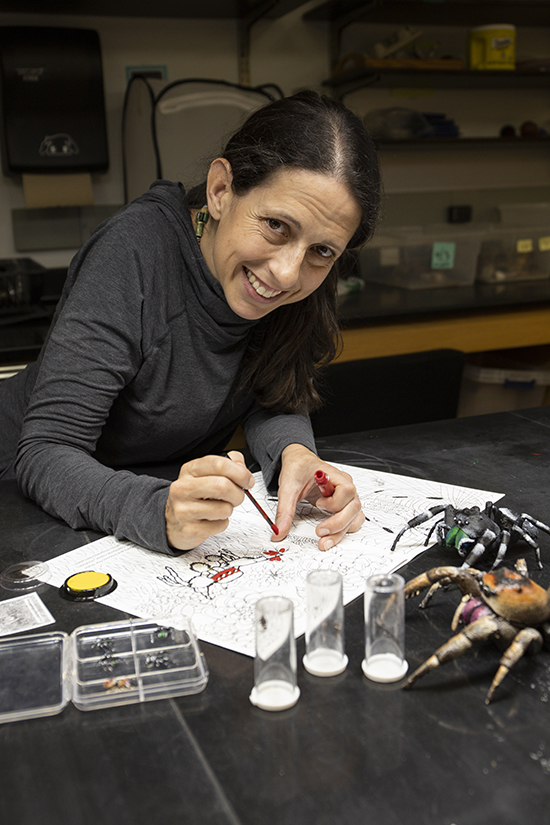Dr. Lisa A. Taylor
Assistant Research Scientist
Behavioral Ecology and Evolution
Dr. Taylor’s research is driven by a fascination with biodiversity, and in particular, with the extravagant and brilliantly colored displays that arthropods use to communicate. The goal of her work is to understand the selection pressures that drive the evolution and maintenance of these colors. She uses a combination of observational field studies of free-ranging animals and controlled laboratory experiments that often employ direct manipulation of color patterns to test hypotheses about how they function and understand the implications they have for ecological interactions. Current projects focus on sexual selection, sensory exploitation, and predator psychology of spiders, wasps, and other colorful but understudied arthropod groups.
-
Research
Sexual selection and the evolution of colorful courtship displays. Much of Dr. Taylor’s current work focuses on jumping spiders, because these make excellent models to understand the evolution of color. Jumping spiders are a highly diverse group of visual predators. There are more than 5000 species, many of which exhibit extreme color diversity between the sexes and across the family. She is examining how the uncertainty of these animals’ environments may have shaped the complexity of their courtship displays which often incorporate elements of color, movement, vibrations, and scent. She is also examining the idea that male courtship displays act as ‘sensory traps’, exploiting the female’s psychology in ways that allow males to avoid cannibalism.
Predator psychology and the evolution of prey coloration. It has been long recognized that the psychology of predators' shapes how they interact with their prey and this will influence how prey defenses such as aposematic colors evolve. This rich field of inquiry has focused almost exclusively on avian predators, despite the fact that many arthropod predators show diverse abilities to perceive and learn about color. Dr. Taylor is examining the perceptual and cognitive abilities of arthropods such as spiders and spider-hunting mud dauber wasps to understand how they may shape the evolution of color in their prey. For example, how do these predators locate, choose, and learn about their prey? And how have the color patterns of prey evolved to influence/exploit these decisions?
-
Teaching
Insect Behavior
(ENY3451C)
This course provides a theoretical and empirical overview of insect behavior, ranging from physiology underlying behavior to the evolution of behavioral diversity. Focus will be on recent and current research on insect behavior, the diversity of approaches for studying it, and how this knowledge can be applied to solve human challenges.
Spider Biology
(ENY 3830)
This course will introduce you to the fascinating world of spiders and their relatives. You will learn about many aspects of their biology, especially their ecology, behavior, and evolution. Spiders are diverse and while identification is not the focus of the course, your goal will be to comfortably recognize and be familiar with the diversity and biology of members of ~20 common spider families.

Contact
Steinmetz Hall
1881 Natural Area Dr.
Gainesville, FL 32611
(352) 273-3937
lisa.taylor@ufl.edu
- Dr. Taylor's Laboratory Page:
-
Education
- Ph.D., Biology, Arizona State University (2012)
- B.A., Biology, Cornell University (2001)
- Google Scholar Publications

